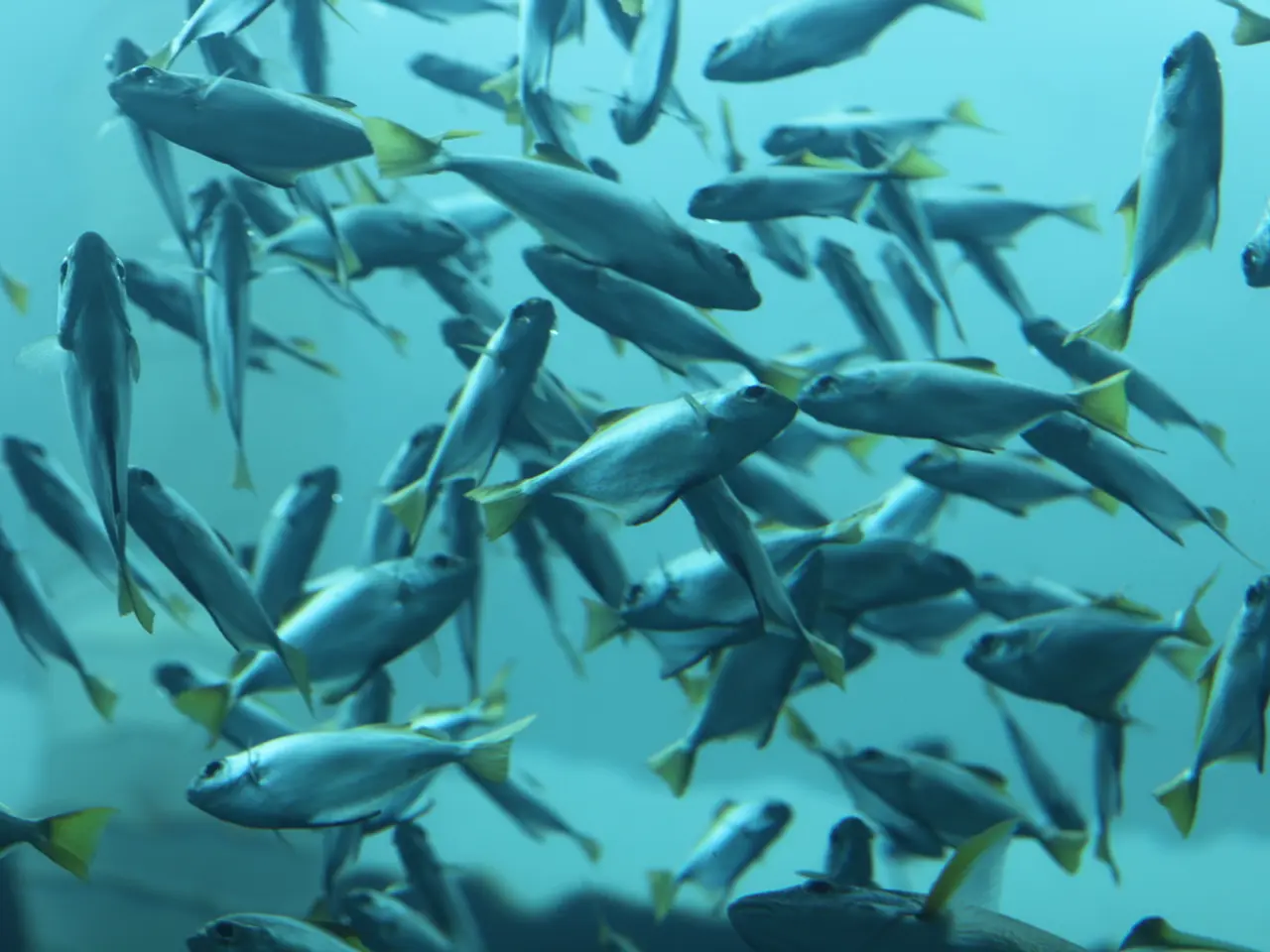Swimmers in the Bathing Lake: Who else partakes in the lake swimming except me? (Wels and Co. references the speaker's identity, which is inferred to be present or associated with the bathing lake).
In the vast expanse of lakes across the world, encounters with fish like northern pike and catfish are rare and generally harmless. These aquatic creatures, while possessing the ability to inflict bites if provoked or in cases of mistaken identity, do not pose a significant threat to swimmers.
Northern Pike and Muskellunge, members of the pike family, can inflict brief bites when disturbed, but prolonged aggression is uncommon. On the other hand, catfish attacks on humans are virtually non-existent, with documented cases being extremely rare.
To minimise the already low risk of fish encounters during swimming, a few precautions are recommended:
- Avoid sudden splashing or erratic movements near aquatic vegetation or shallow water where pike are more likely to hunt.
- Stay out of known spawning or feeding areas, especially during dawn or dusk when predatory fish are most active.
- Do not disturb underwater plants or debris that serve as fish cover to maintain their natural environment and reduce stress on fish populations.
- Avoid swimming near fishing activity areas, as fish in these zones may be more agitated or active.
- Wear neutral-colored swimwear to avoid attracting attention of curious fish.
It's important to note that fish like roach and minnows may be visible around bathers at swimming spots, indicating their inherent avoidance behaviour and tendency to keep a distance from humans.
While fears of attacks by catfish or pike may seem alarming, they are largely unfounded. The likelihood of an attack is significantly lower than winning the lottery. In fact, the largest freshwater fish in Germany, the catfish, usually measures 1.5 to 2 meters in length, but poses no significant threat to swimmers.
In the specific case of the Brombachsee in Middle Franconia, Germany, two catfish attacks on bathers occurred in June and July. However, these incidents were unusual, with the shore areas having dried up, and the catfish using bathing islands for its nest.
Professor Robert Arlinghaus, a fisheries expert at Humboldt University in Berlin, has studied fish in bathing lakes and notes that incidents such as these are extremely rare. He advises swimmers to respect fish habitats and limit disturbance to their environment to further reduce any chance of unwanted encounters.
In conclusion, while fish like northern pike and catfish inhabit many lakes, attacks on humans when swimming are extremely uncommon and usually minor if they occur. By respecting fish habitats and limiting disturbance to their environment, swimmers can enjoy the beauty of lakes with peace of mind.
Science has shown that implementing education and self-development, specifically in the field of environmental-science, can help reduce the risk of encounters between swimmers and potentially aggressive fish species like northern pike and catfish. Learning about these species' habits and preferences, as well as understanding the importance of maintaining a healthy aquatic ecosystem, can lead to safer swimming experiences. Furthermore, sports like fishing can provide an opportunity for individuals to engage in meaningful environmental activities, fostering a sense of responsibility towards the protection of fish populations and habitats.




